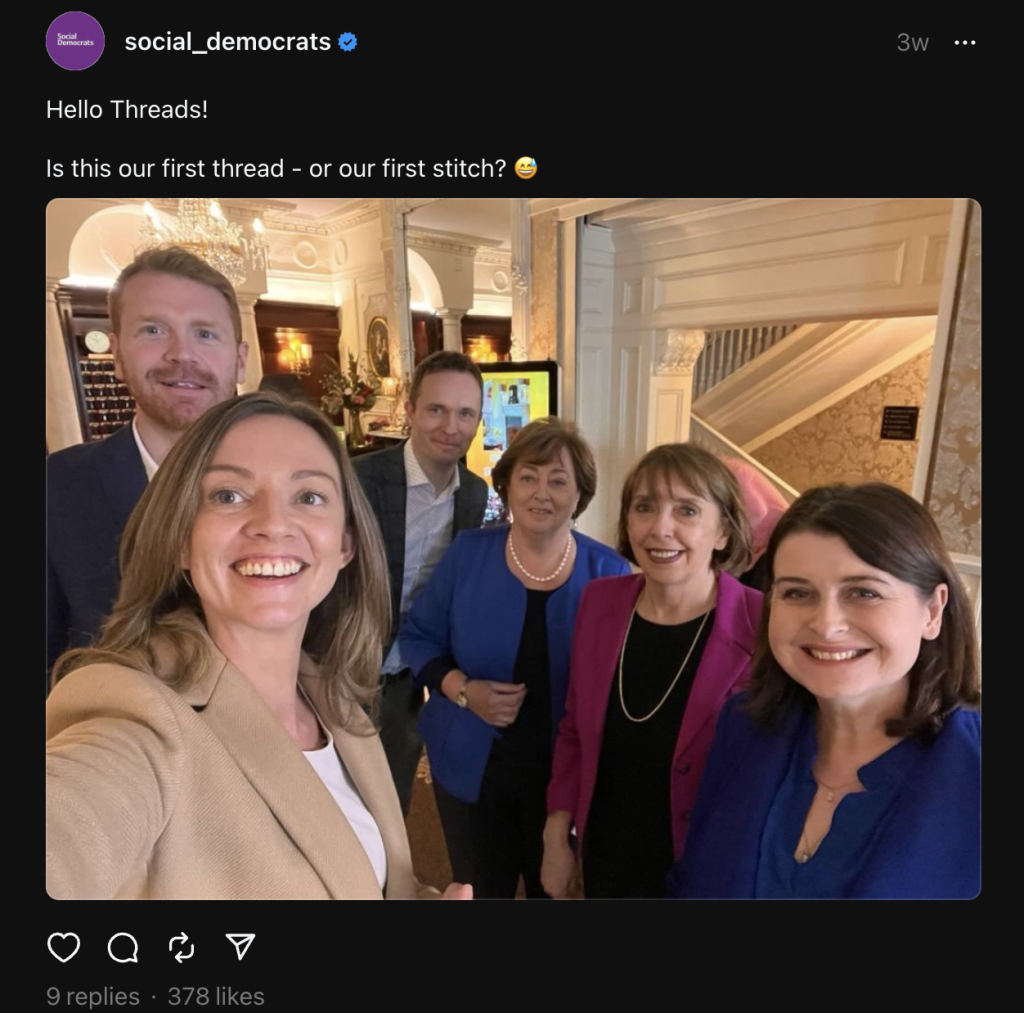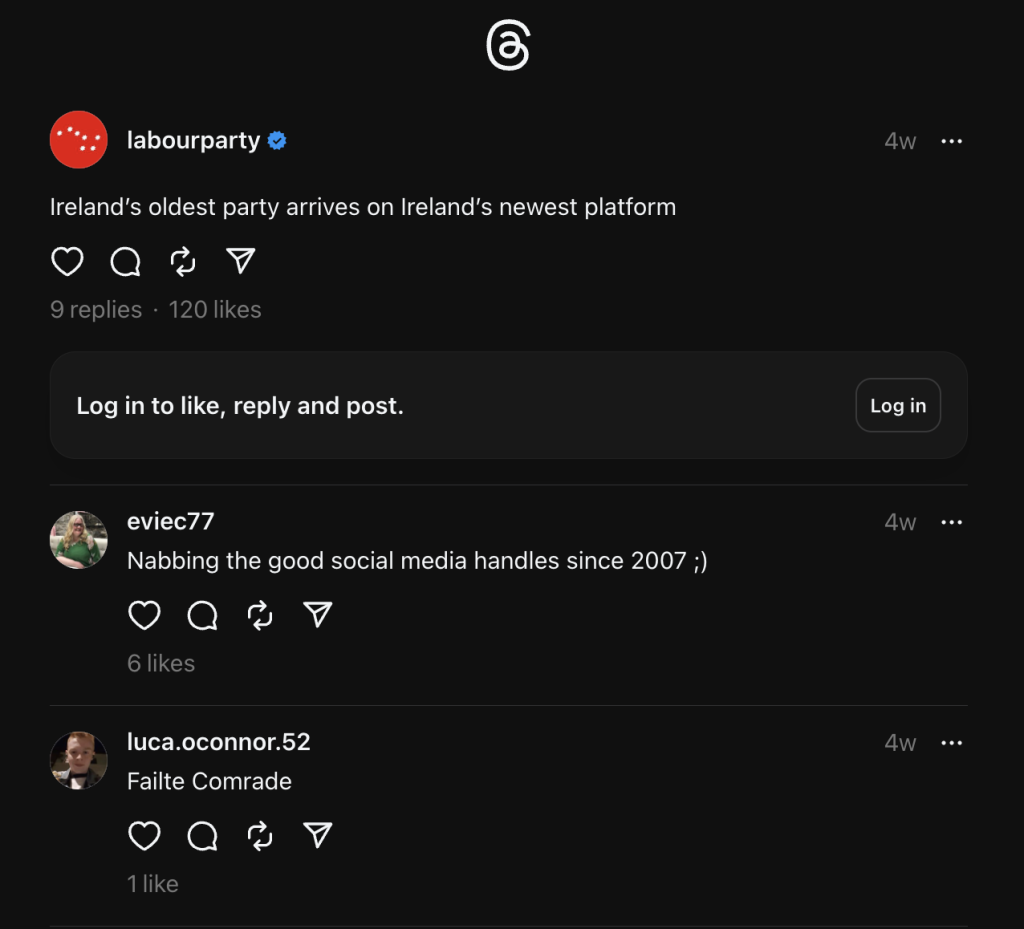The end of the year has ushered in yet another new tool. Just when you thought you’d conquered all the ‘appy’ jargon and algorithms, Threads is the latest social media contender. Each new tech launch evokes a wave of anxieties, prompting considerations on how best to harness its capabilities to refine one’s communication strategy while gaining an edge over competitors.
So, here you are, wondering, what’s the scoop with Threads? How does this app work? Will it be the new X? Let’s explore if Threads is set to be a cornerstone of new-strategy prescriptions or if it’s a fleeting trend.
Threads: a new social media contender
Last year, Meta rolled out its latest application, Threads, in both the US and the UK. Already positioned strategically to rival X from its launch, Threads has notably aimed at Elon Musk’s makeover of the platform. Quickly nicknamed as the “Twitter killer”, Threads mirrors certain features of its counterpart while operating firmly under the Meta banner.
Its debut in Europe experienced notable delays, reportedly due to essential modifications required to comply with the bloc’s rigorous regulation of online content, especially in the context of the recent Digital Services and Digital Markets Acts). Threads stands out with its unique Meta integration, potentially tapping into Instagram’s vast user base.
Threads vs. Twitter/X
Following Elon Musk’s takeover of Twitter, now named X, and the platform’s recent right-leaning bias, users have tried to migrate to alternative micro-blogging platforms, such as BlueSky or Mastodon. But this transition has proven ineffective, fragmenting audiences across multiple social apps while intensifying confusion about their utility and prompting reconsideration of which platform is most useful.
Could Threads emerge as the best alternative to X when it comes to political communication? Let’s examine how both political figures and parties have begun to use the platform.
Political figures and Threads: a cautious approach
In an earlier piece, we spotlighted the social media rockstars within European politics. Have they made the transition?
Prominent European politicians, including Emmanuel Macron, Annalena Baerbock, Sanna Marin or Kyriakos Mitsotakis, have yet to engage with Threads. Even Germany’s Chancellor, Olaf Scholz, and his affiliated chancellor account haven’t used the app. Their reluctance may stem from uncertainty about the platform’s role in political discourse or a preference for established networks (Instagram, Facebook or X).
However, right-wing politicians like Giorgia Meloni, Marine Le Pen and Eric Zemmour are actively exploring Threads, indicating a more forward-thinking approach.
Adoption by political parties: diverse strategies
When it comes to parties, their adoption of the new app varies. We observed that left-leaning organisations, including progressives and greens, are particularly keen on embracing this new platform.
Their initial posts on Threads range from straightforward greetings (Parti Socialiste of Belgium, Partido Popular of Spain, Les Republicains of France or Sinn Féin of Ireland) to summaries of their core values or recent policies (Pacma Spain, Partito Democratico Italiano, Renaissance France, Partij voor de Dieren, Die Linke). Some opted for a lighthearted approach conveying gratitude towards their followers (Sumar Spain) or projected a confident stance (Volkspartei Austria, Liberal Alliance, Dansk Folkeparti DK, USR Romania). Those with a sense of humour opted to kick off with jokes, puns or memes (CDU Germany, Gruenen Germany, Social Democrats Ireland).



Others have chosen to establish accounts on Threads without posting right away, giving them time to build a follower base while familiarising themselves with the platform. This seems to be the Norwegian approach: those Norwegian parties that registered on Threads have currently no posts. But this isn’t a unique trend among European parties.
Numerous parties opted to repost images or descriptions originally crafted for other social platforms, like Facebook, Instagram or X. The timing of these reposts appears irregular, perhaps reflecting the moment when party social media teams remember the app’s existence. Strategically, some parties capitalised on the app’s European launch in December—a month synonymous with holidays and increased screen time. Many parties chose to connect with their followers by extending holiday greetings.
Staying ahead with Threads: the case of the Czech Pirate Party
The Czech Republic’s Pirate Party exemplifies a proactive approach to Threads. Despite the app’s delayed European launch, European users could still access it via a VPN. Embracing their “pirate” nature, the liberal progressive party joined Threads ahead of the launch date, establishing themselves as one of the first major European political entities on the platform. This early entry allowed them to amass an impressive 7,000 followers on Threads – a notable achievement considering their 50,000 followers on Instagram. By comparison, Spain’s VOX Party, boasting 700,000 Instagram followers, only garnered a Threads community of 28,000.
While this approach can offer an advantage, it is not a universal rule. The Netherlands’ VVD employed a similar strategy, yet their Threads membership ratio remains notably lower. Interestingly, both the Czech Pirate Party and VVD have comparable numbers of followers on Instagram.
When considering your first post on Threads, it’s best not to overcomplicate things. You don’t need to rack your brain to come up with the most creative punchline. Drawing inspiration from existing examples can be helpful. Sometimes, a simple greeting is enough while still figuring things out.
To join Threads or not?
It never hurts to have more platforms to reach audiences, right? After all, there is a potential for a split user base where some choose to migrate from X to another platform. You’ll run into the issue of having a fractured user base on different platforms, but every party will have the same problem. That doesn’t mean you need to exit X now and shift entirely to Threads, as the existing online community continues to offer opportunities.
What’s paramount is to set up your Threads account before your competition. As we’ve seen, some parties may have a digital lead already, but since we’re at the beginning stages of this platform, it’s best to adapt to this change as soon as possible.
The future of Threads
The longevity and impact of Threads in politics remain uncertain. While it has the potential to become a major platform, it faces challenges, including possible legal issues in the US and adapting to the EU’s strict online regulations. For instance, shortly after Threads was launched in Europe, the EU Commissioner Thierry Breton initiated a formal infringement investigation against X, based on suspected breaches of various obligations under the DSA. These include failure to counter illegal content, address disinformation, and ensure transparency, as well as the alleged deceptive design of its user interface.
While X, as well as other major online platforms, face close scrutiny under European legislation, Threads benefits from its delayed European launch, allowing Meta to adjust to the new rules. Whether Meta can adapt to these changes is critical for Threads to be successful in the medium to long term, especially if X’s EU legal problems worsen.


